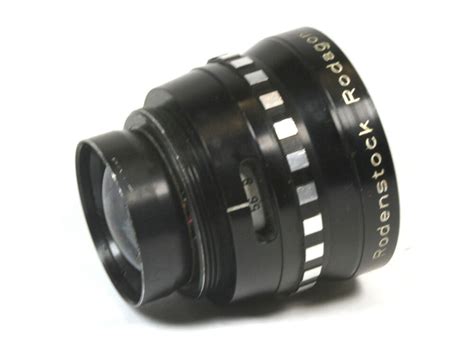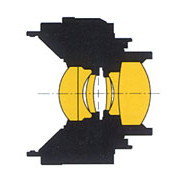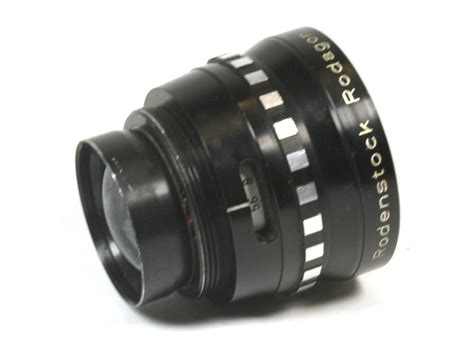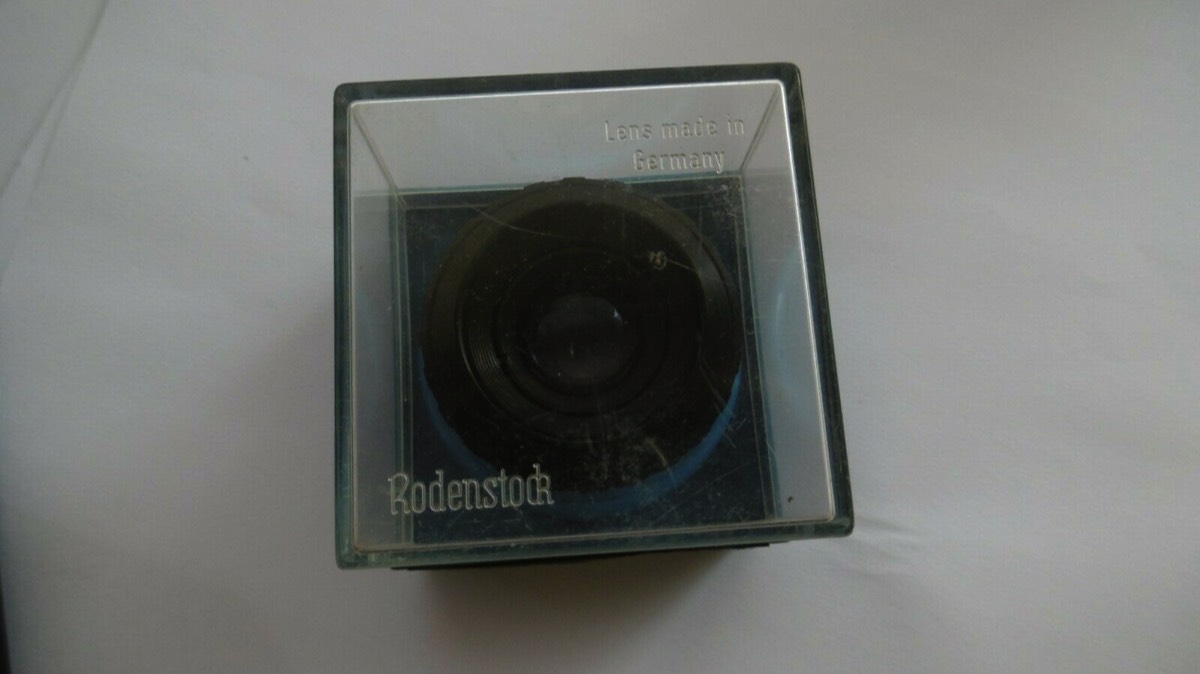History
Josef Rodenstock was a court optician of the German Emperor. Rodenstock GmbH is a German manufacturer of ophthalmic lenses and spectacle frames. The company, was founded by Thuringian Josef Rodenstock in 1877 based in Munich.
From the 1920s onward, Rodenstock launched the mass production of camera lenses for a large number of major camera manufacturers. As the result of pressure from the clients for these lenses, the company stopped the production of its own cameras. Between 1930 and 1939, Rodenstock established representatives and offices on all major markets worldwide.
In the Great Depression that followed, exports plummeted and sales fell by 62% in four years, resulting in poor management, and the survival of the company was jeopardised by the pressure from banks and the danger of hijacking by the Nazi German government. Production of camera lenses was strong again from the mid-1930s, and by this time the first in-house cameras called Clarovid I and II were being built. However, the pressure from the lens supplier soon forced the camera production to stop. In World War II, free business activities were restricted under strict supervision by the Ministry of Defense, and the company was able to produce only tank sights, periscopes, and spectacle lenses.
During WWII, Rodenstock manufactured mainly armaments. The company also continued to manufacture eyeglasses, as those were deemed of military importance and indispensable. After the war, Rodenstock once again focused on its core competences, particularly the fields of ophthalmic lenses and frames.
Alexander Rodenstock's son Rolf Rodenstock took over the company in 1953, starting the rise of Rodenstock to a world-renowned major player in the optics industry. Since 1954, the company has increased its investment in public advertising in addition to ads in trade magazines for opticians and ophthalmologists. Rodenstock was the first in the business to hire internationally renowned stars such as Brigitte Bardot, Carl Möhner, Curd Jürgens, Gina Lollobrigida, Hildegard Knef, Senta Berger, Toni Sailer or Roy Black for testimonials.
In 1955, the company produced 5 million ophthalmic frames. Rodenstock continued to manufacture other optical devices, such as projection lenses for slide projectors (Splendar). In 1968, the company introduced the first photochromatic glasses in Europe, and from 1975 onwards, it produced the first plastic ophthalmic lenses in the world.
Rodenstock's camera division is a modest existence because it mainly produced large format lenses for professionals, but its ability and brand power are equivalent to those of Leica, Zeiss, Schneider, etc., and it is a hit that has released excellent products to the world. From 1950s to early 1960s, they had produced some interchangeable Lenses for 35mm SLR and viewfinder cameras.
Although Rodenstock produced two million lenses from 1954 to 1961, the production number of interchangeable lenses is relatively low compare to other Germany manufacturers. The Heligon introduced this time is a product manufactured from 1956 to 1959, A total of 1039 F1.9 Heligons were manufactured, including 160 master lenses for the Exakta mount and 3 for the M42 mount. The lens reviewed here is a very rare lens.
In 1983, Randolf Rodenstock joined the group of shareholders at Optische Werke G. Rodenstock as a personally liable partner (general partner), leading the company together with his father Rolf Rodenstock. In 1989, Rodenstock shifted the majority of its Munich production capabilities to its newly established serial production facilities in Thailand and its production facilities in Ebersberg were moved to Malta. Between 1988 and 1989, revenues decreased by 10% from previously €700 million. 1991 saw the introduction of the R logo and trademark.
Between 1995 and 1996, the company built a new production facility for prescription lenses in Klatovy (Czech Republic). In 2000, the business segments precision optics (production of lenses for analogue view cameras, a.o. the Sironar, Apo-Ronar, and Grandagon brands), enlargers (e.g. the Rodagon), and digital view cameras with high-resolution digital backs (e.g. the 1997 Apo-Sironar digital) were sold to Göttingen-based Linos AG.
After this, the company continued to produce lenses for large format cameras, but in 2000, it sold the optical equipment division, which develops and manufactures photographic lenses, to Linos AG (Gettingen, Germany) and changed the company name to Rodenstock GmbH. , By unifying the production to only eyeglasses, it has withdrawn from the production of photographic lenses
Like many other Germany manufacturer, the lenses changed from chrome finish to black finish with focus/aperture ring in zebra style.
This LensRodenstock Rodagon 50mm f2.8 is a high quality 6 element enlarger lens that can easily be used with a helicoid on a digital camera due to its 39mm thread and is also ideal when reversed for extreme macro. This lens has a flange focal distance 43.5mm. They are quite cheap to buy and very good value for money. Enlarger lenses are a boon. Because of the virtual death of film, you can pick up amazing lenses that used to go for 300-1000 Euros for a few euros on eBay, 25-50 Euros for really good ones is typical.
The 6 elements design guarantees the resolution of the finest details while maintaining a uniformly high contrast from the picture center to the edges.
Good enlarger lenses are built to very high precision, often much higher than "general purpose" photographic lenses.
- The lens comes in a box. At the bottom of which has a thread, where it is screwed.
- The aperture has a 5 blackened blades.
- The lens has a sharp on wide open, but at close range has a narrow depth of field. Close the aperture and sharpness, and depth of field increases and the lens becomes very sharp. I've rarely seen such sharpness even at macro lenses.
- The lens has an excellent contrast. It copes with strong backlighting. And behaves even better than the Olympus Zuiko 80 mm f / 4 Macro.
Rodenstock Rodagon 50mm f / 2,8 is a quality lens with great features. It can be used for macro product shooting shallow and wildlife. Performance claims fulfill at 100%. The disadvantage is a short flange distance and the absence of the focusing mechanism.
The lens type Rodagon, with brilliant reproduction over the whole scale range of conventional enlargers, has become the universal workhorse of both demanding amateurs and professionals in practical use.
SummaryI paid 20 euros for this lens and at that price it must been of my best buys ever. It is sharp, has wonderful bokeh, great colour rendition, is small and easy to use. The only issue is the five blade aperture creating pentagonal bubbles when closed down but even this can be used creatively!
This is a wonderful lens and creates wonderful bokeh, even good bubble bokeh wide open.








